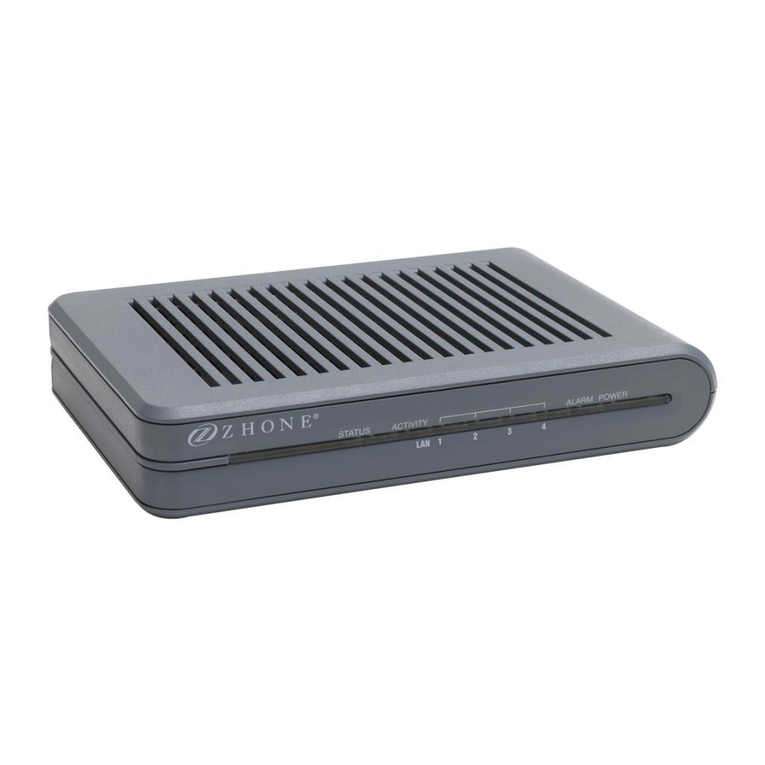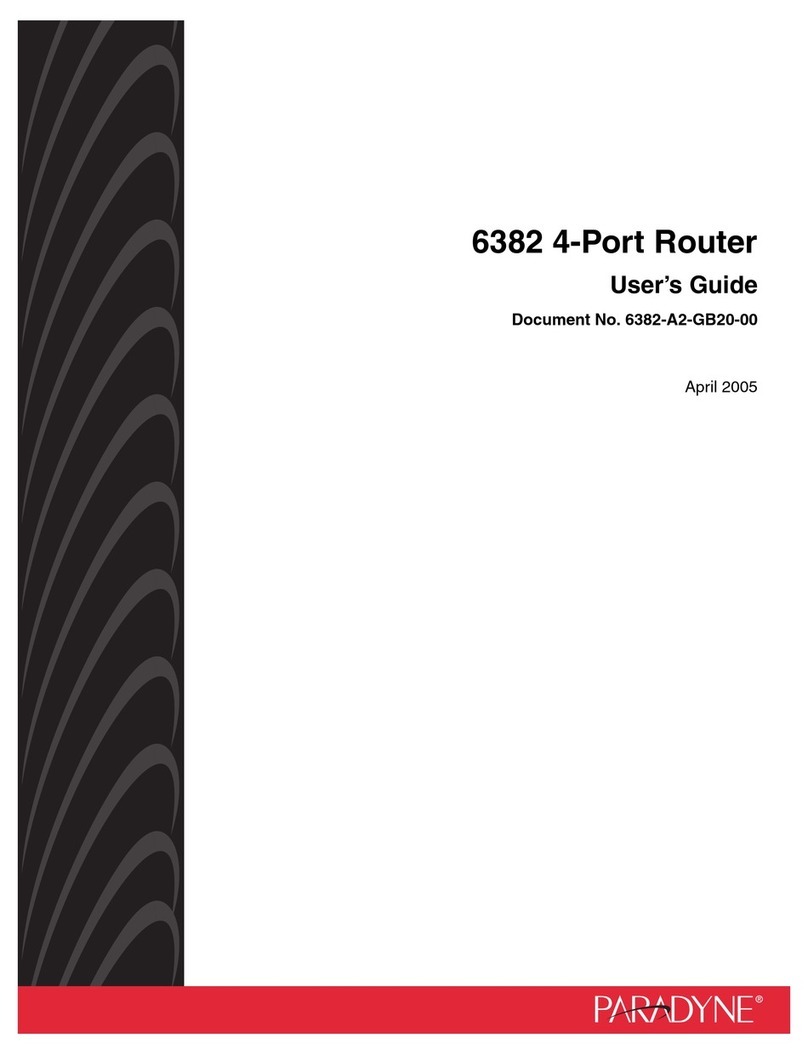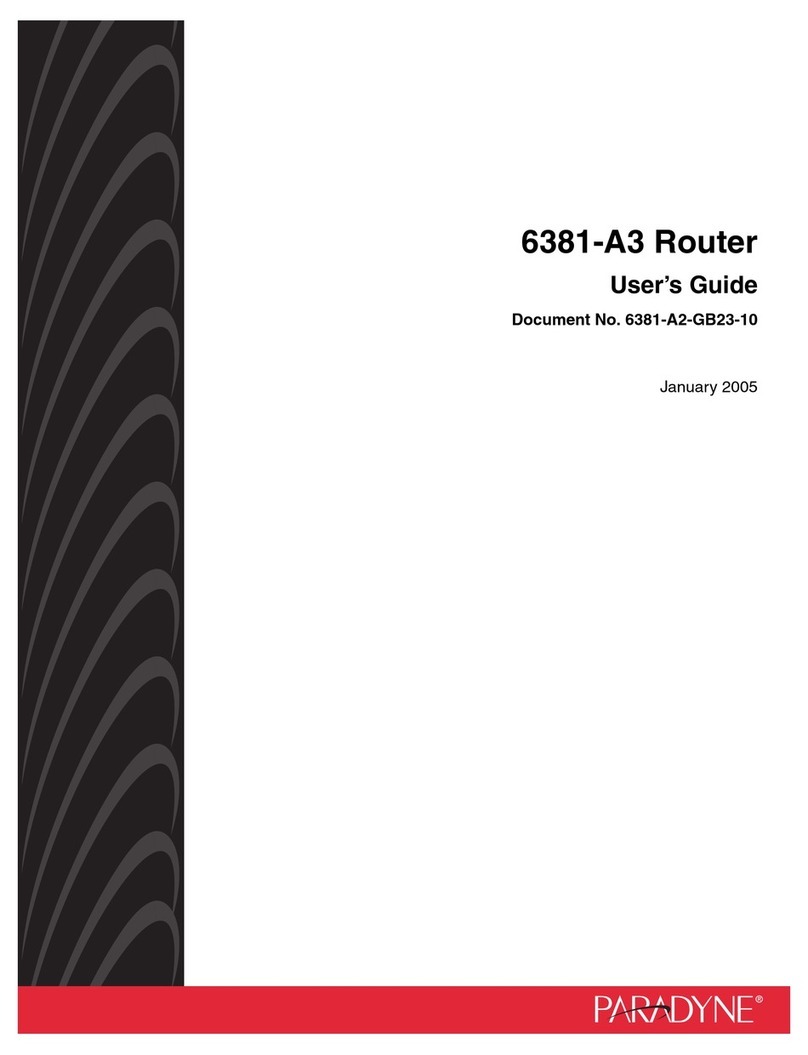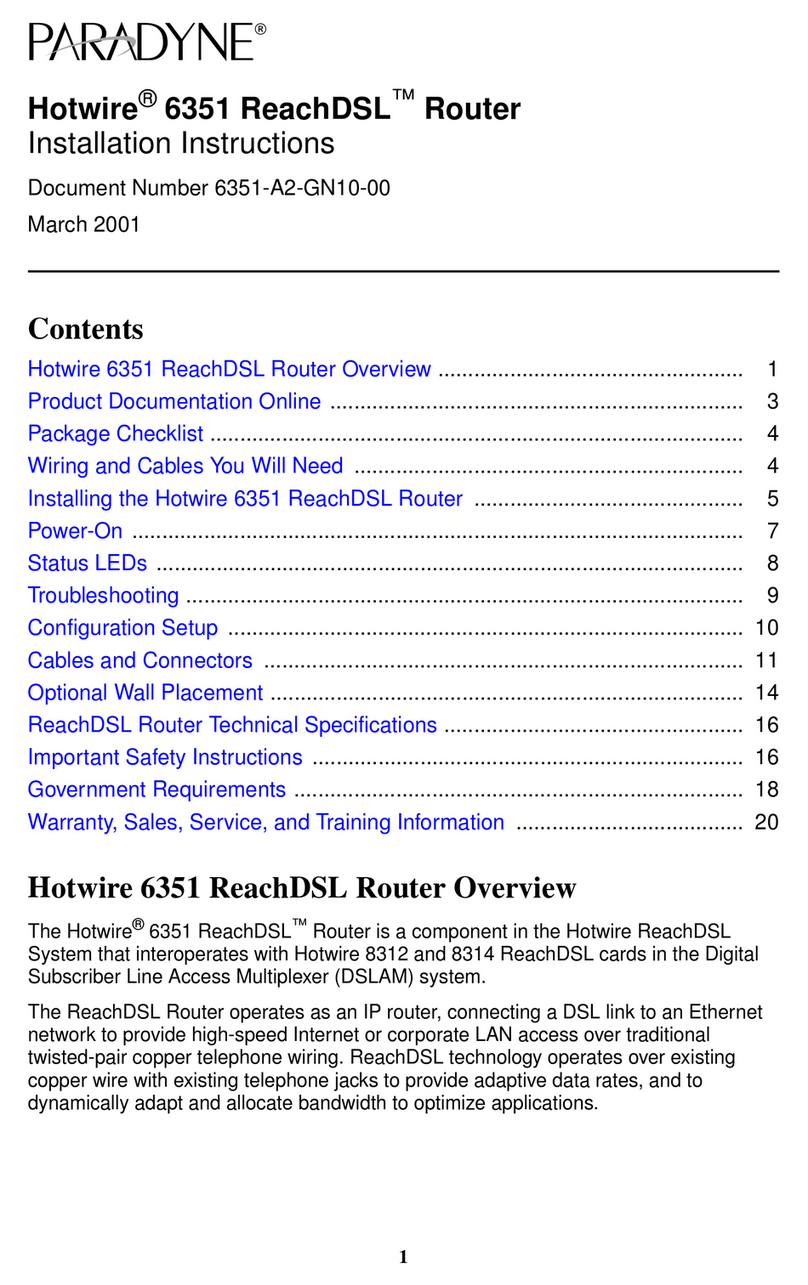Paradyne FrameSaver 9783 User manual
Other Paradyne Network Router manuals

Paradyne
Paradyne FrameSaver 9123 User manual

Paradyne
Paradyne Hotwire 6211 Installation instructions

Paradyne
Paradyne HotWire 5246 User manual
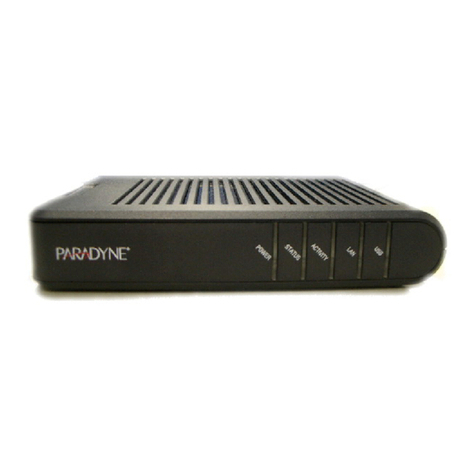
Paradyne
Paradyne BitStorm 6211 CPE User manual

Paradyne
Paradyne FrameSaver 9720 User manual
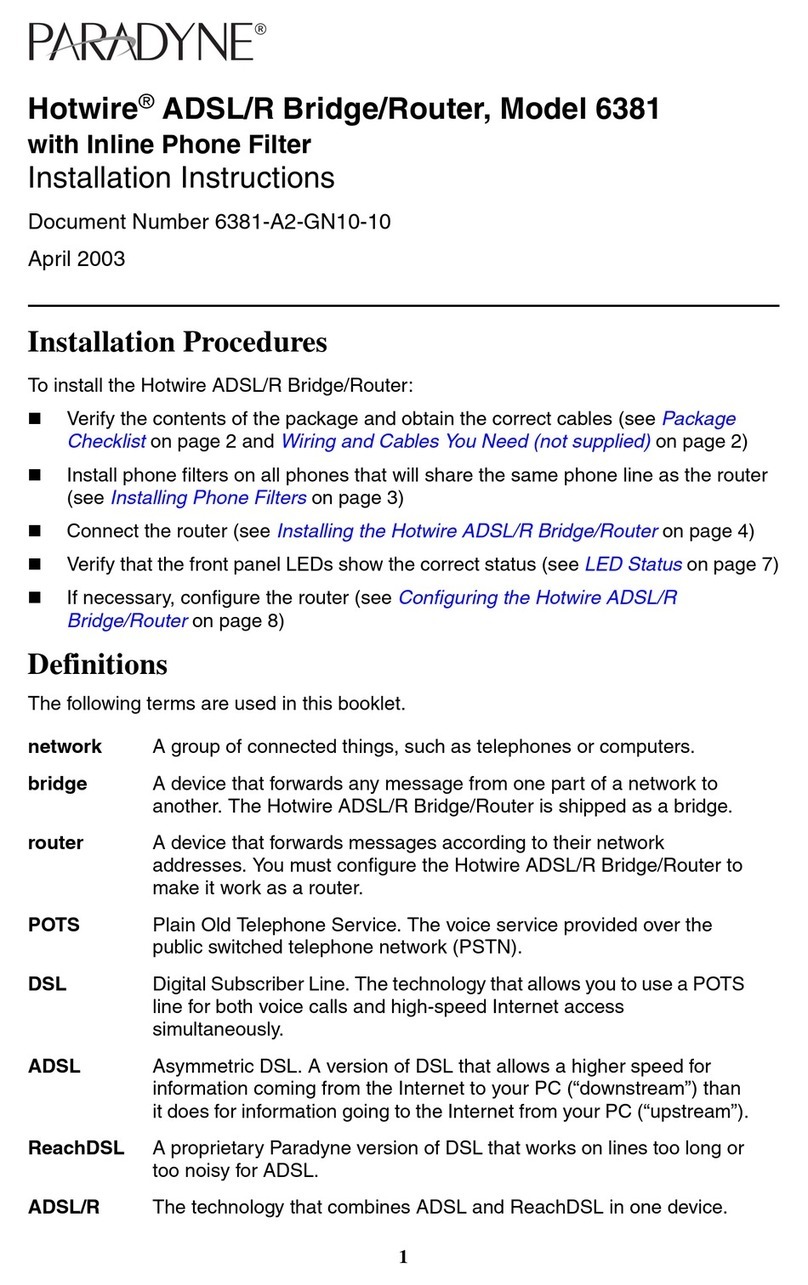
Paradyne
Paradyne Hotwire 6381 User manual
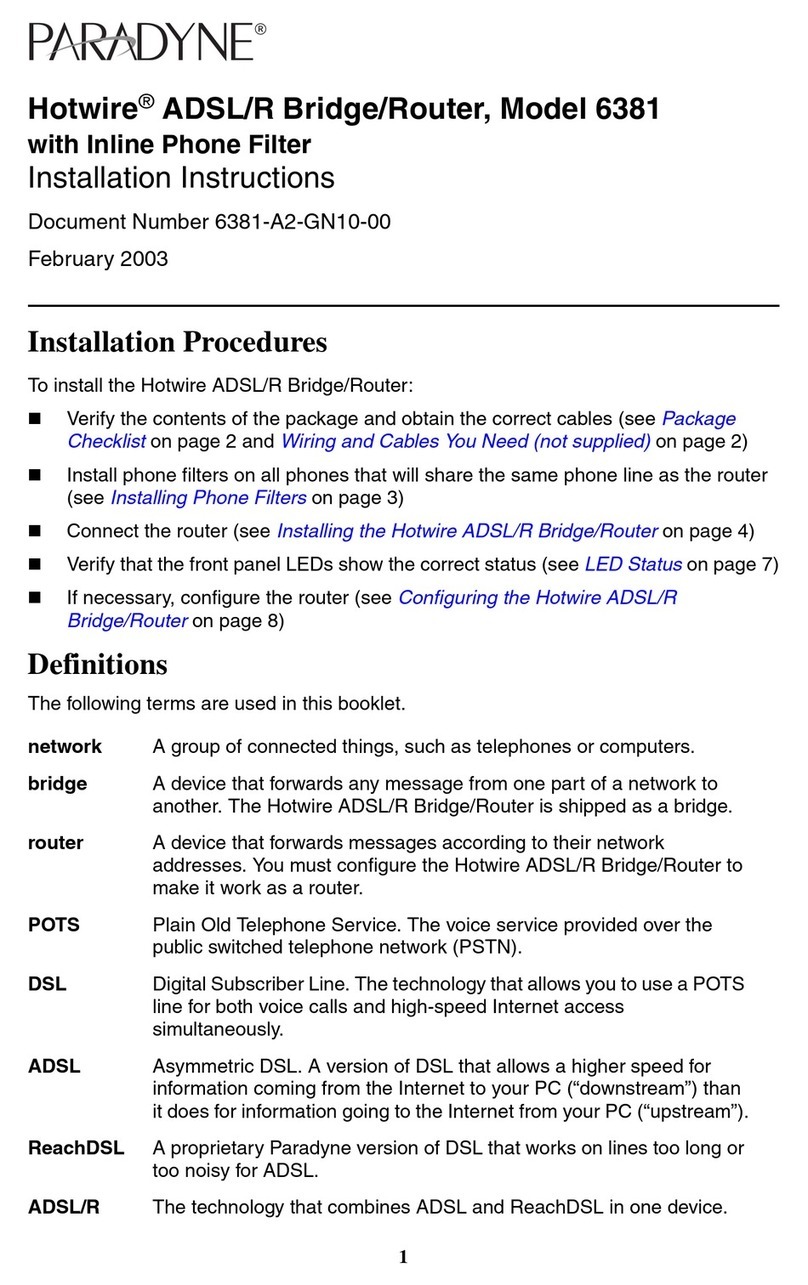
Paradyne
Paradyne Hotwire 6381 User manual
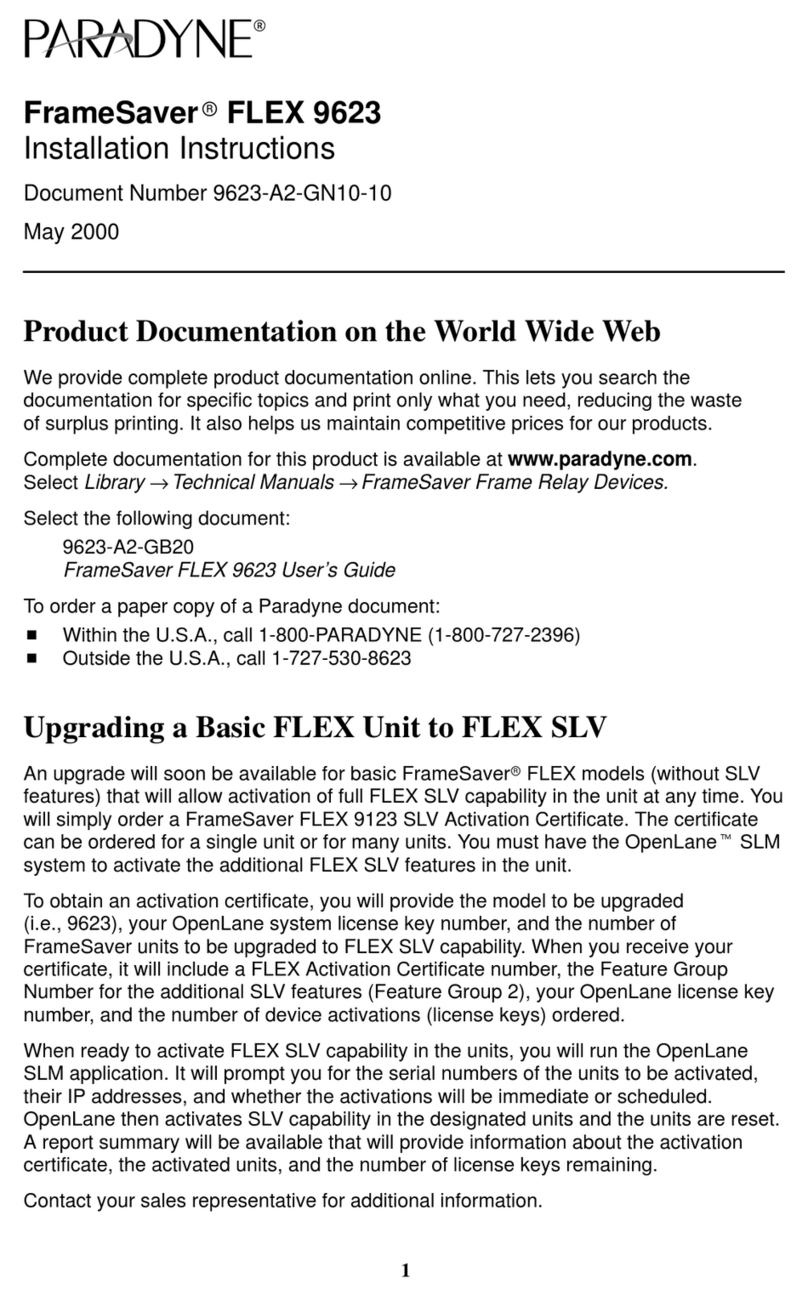
Paradyne
Paradyne FrameSaver FLEX 9623 User manual
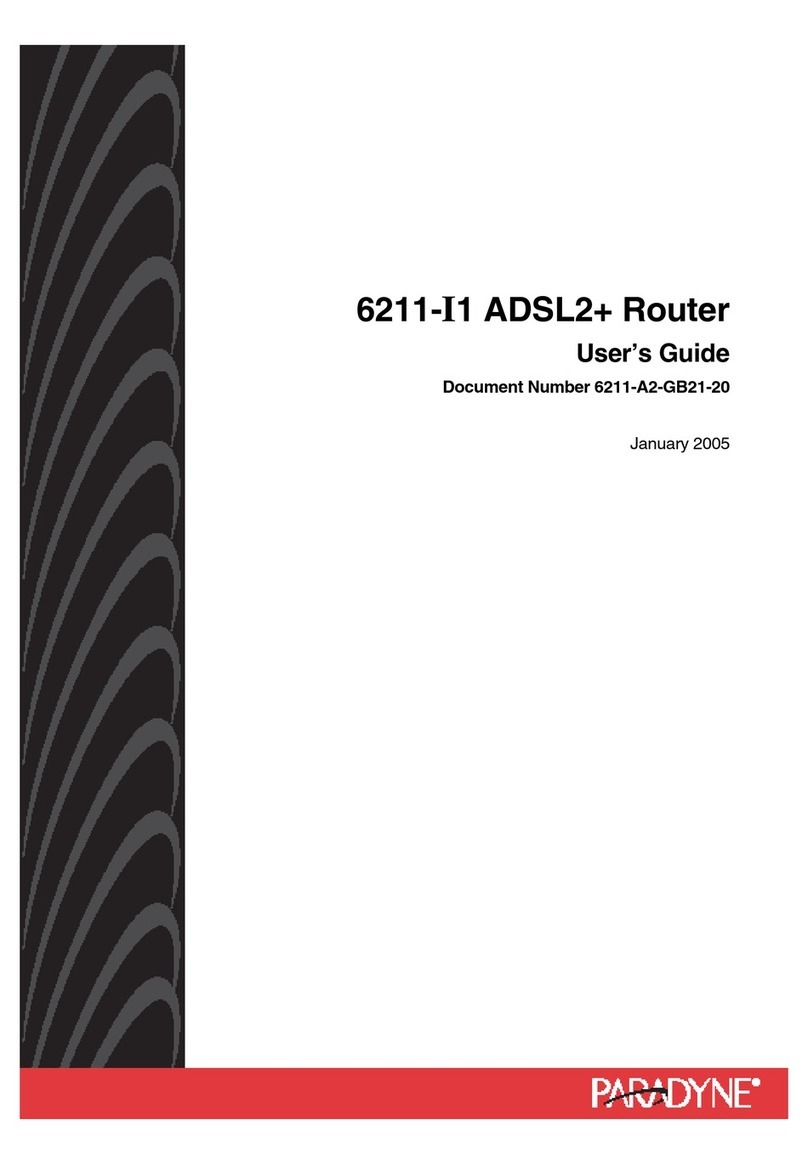
Paradyne
Paradyne 6211-I1 User manual

Paradyne
Paradyne Hotwire 6381 Quick start guide
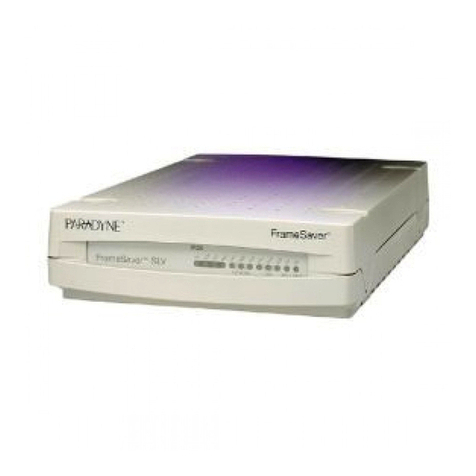
Paradyne
Paradyne iMarc SLV 9126 User manual
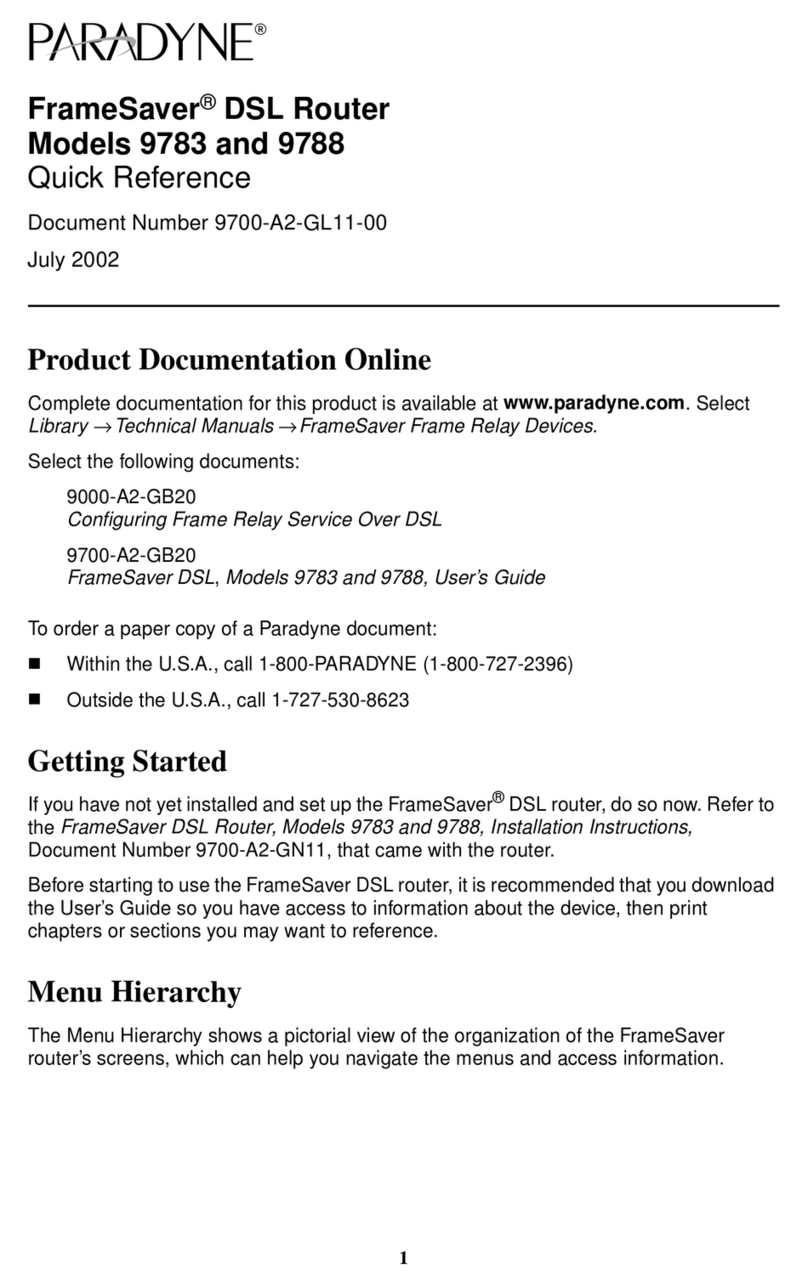
Paradyne
Paradyne FrameSaver 9783 User manual

Paradyne
Paradyne Hotwire 6212 User manual
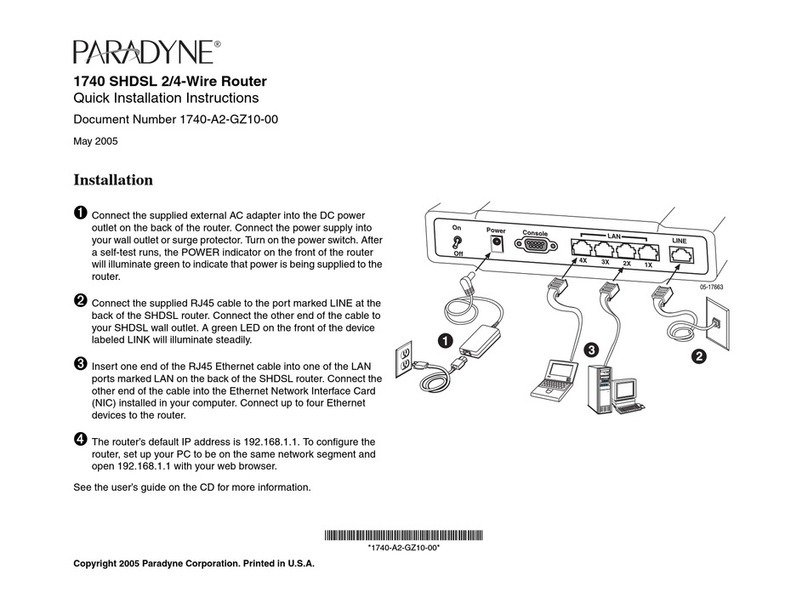
Paradyne
Paradyne 1740 SHDSL Original operating instructions
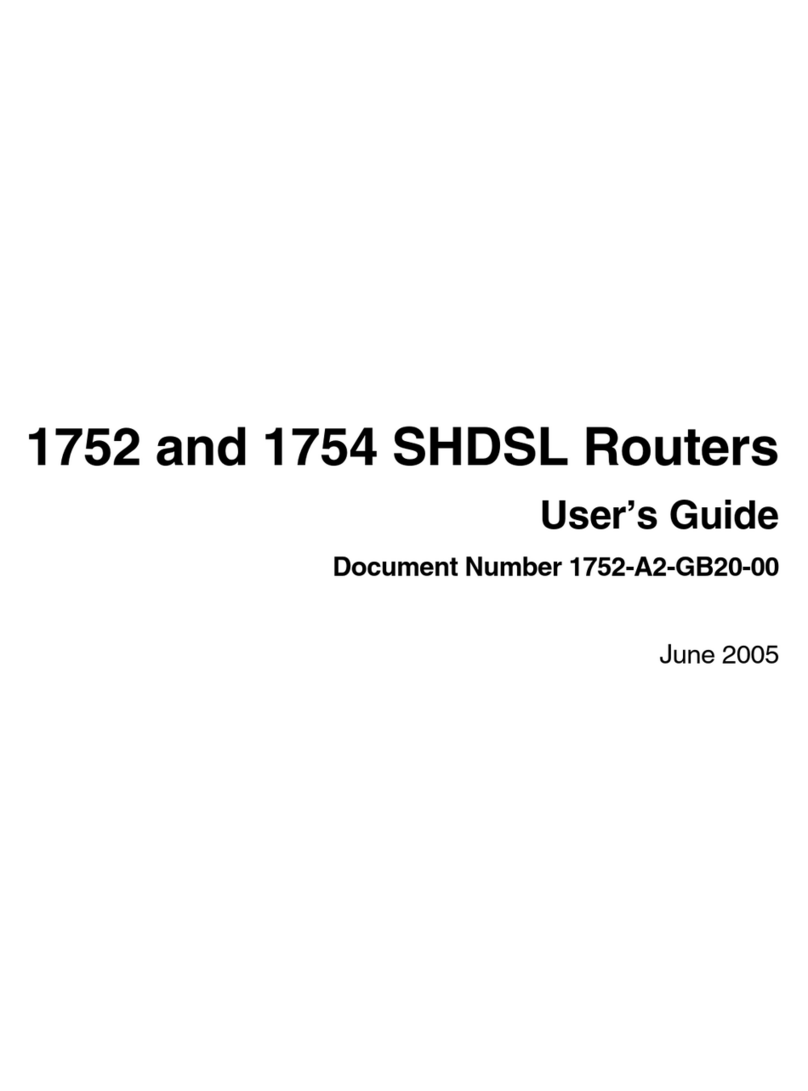
Paradyne
Paradyne 1752 SHDSL User manual

Paradyne
Paradyne iMarc 9550 DS3 User manual

Paradyne
Paradyne Hotwire 6211 Original operating instructions
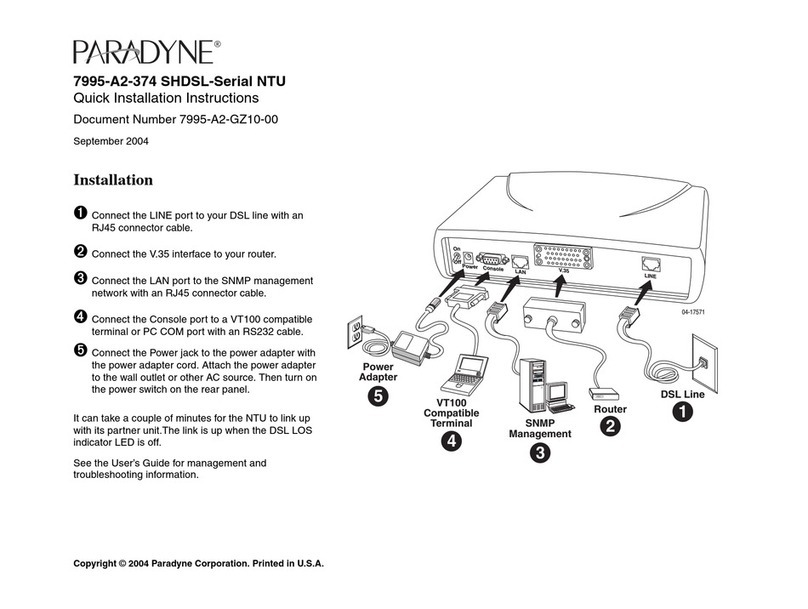
Paradyne
Paradyne Hotwire 7995 Original operating instructions
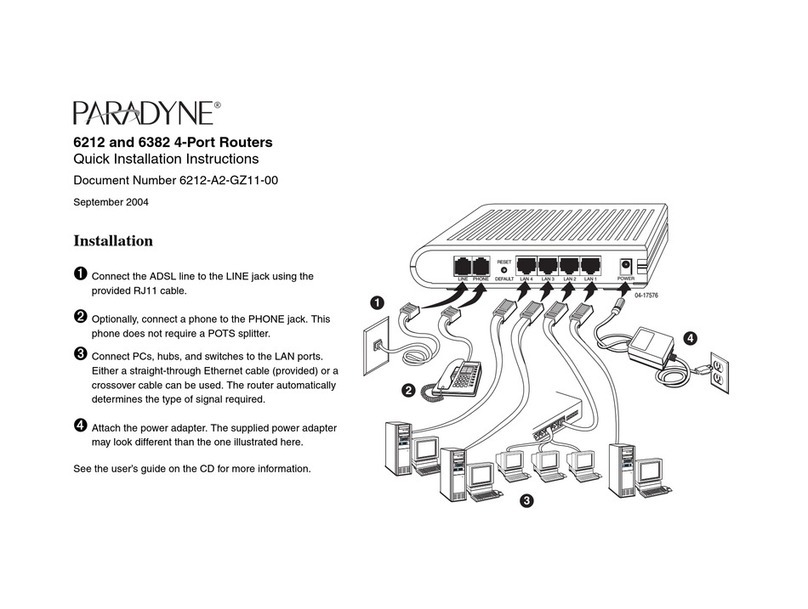
Paradyne
Paradyne Hotwire 6212 Original operating instructions
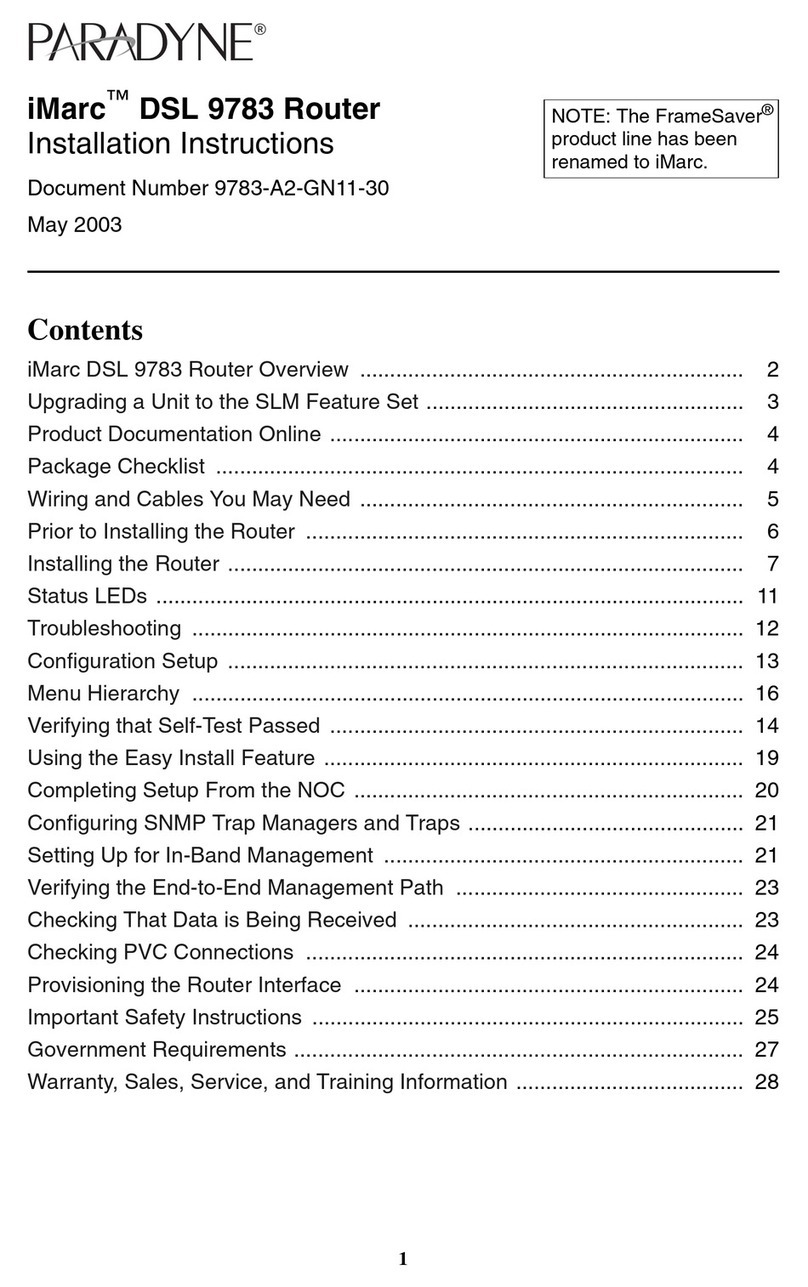
Paradyne
Paradyne iMarc DSL 9783 User manual
Popular Network Router manuals by other brands

TRENDnet
TRENDnet TEW-435BRM - 54MBPS 802.11G Adsl Firewall M Quick installation guide

Siemens
Siemens SIMOTICS CONNECT 400 manual

Alfa Network
Alfa Network ADS-R02 Specifications

Barracuda Networks
Barracuda Networks Link Balancer quick start guide

ZyXEL Communications
ZyXEL Communications ES-2024PWR Support notes

HPE
HPE FlexNetwork 5510 HI Series Openflow configuration guide
